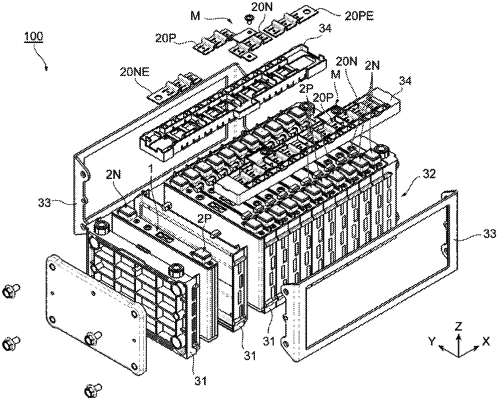|
1. A battery module comprising: a plurality of battery groups, wherein: each battery group includes a plurality of battery cells, a first bus bar, and a second bus bar, the first bus bar and the second bus bar being configured to connect the plurality of battery cells in parallel, each battery cell includes a positive electrode terminal mainly containing aluminum and a negative electrode terminal mainly containing copper, the first bus bar mainly contains aluminum and is connected to the positive electrode terminals of the plurality of battery cells of each battery group via welding joint portions, the second bus bar mainly contains copper and is connected to the negative electrode terminals of the plurality of battery cells of each battery group via welding joint portions, and the plurality of battery groups are connected in series as a result of a first bus bar of one of mutually adjacent battery groups being connected to a second bus bar via a mechanical joint portion, wherein the mechanical joint portion includes a rivet adapted to connect the first bus bar and the second bus bar together by penetrating through the first bus bar and the second bus bar and thus undergoing plastic deformation.
|
